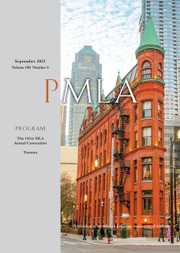Article contents
XII.—The Dialect of the Hildebrandslied
Published online by Cambridge University Press: 02 December 2020
Extract
As Holtzmann has shown the Hildebrandslied as we now have it is a copy from an older manuscript. That it was not written in its present form from memory is seen in the fact that the mistakes are those of sight. For example, Hiltibraht occurs six times for Hiltibrant, man for inan, unti for miti, etc. The errors show that the writer or writers did not fully understand what they were writing, and that their copying was mechanical. It follows that the manuscript from which they wrote did not differ materially from their copy, or in other words, that the linguistic confusion was already present. This confusion, however, cannot be entirely explained unless with Kögel we assume that at an earlier time there was a copy from memory.
- Type
- Research Article
- Information
- Copyright
- Copyright © Modern Language Association of America, 1896
References
1 It is equally true that it does not occur in the pret. of reduplicating verbs in O.H.G.
1 This belongs here if it is connected with O.H.G. weizzen. But it may be referred to Goth. wadjôn, wadjan, as Möller, Ahd. All., 95 f., suggests. The same derivation is given by Wilhelm Luft in a recent dissertation on Die Entwickelung des Dialoges im alten Hild., p. 28, and credited to a ‘Studienfreund.’
1 The word must be written with ê < eo, as in Dêtrîhhe, if it is connected with O.E. bréotan.
- 1
- Cited by


